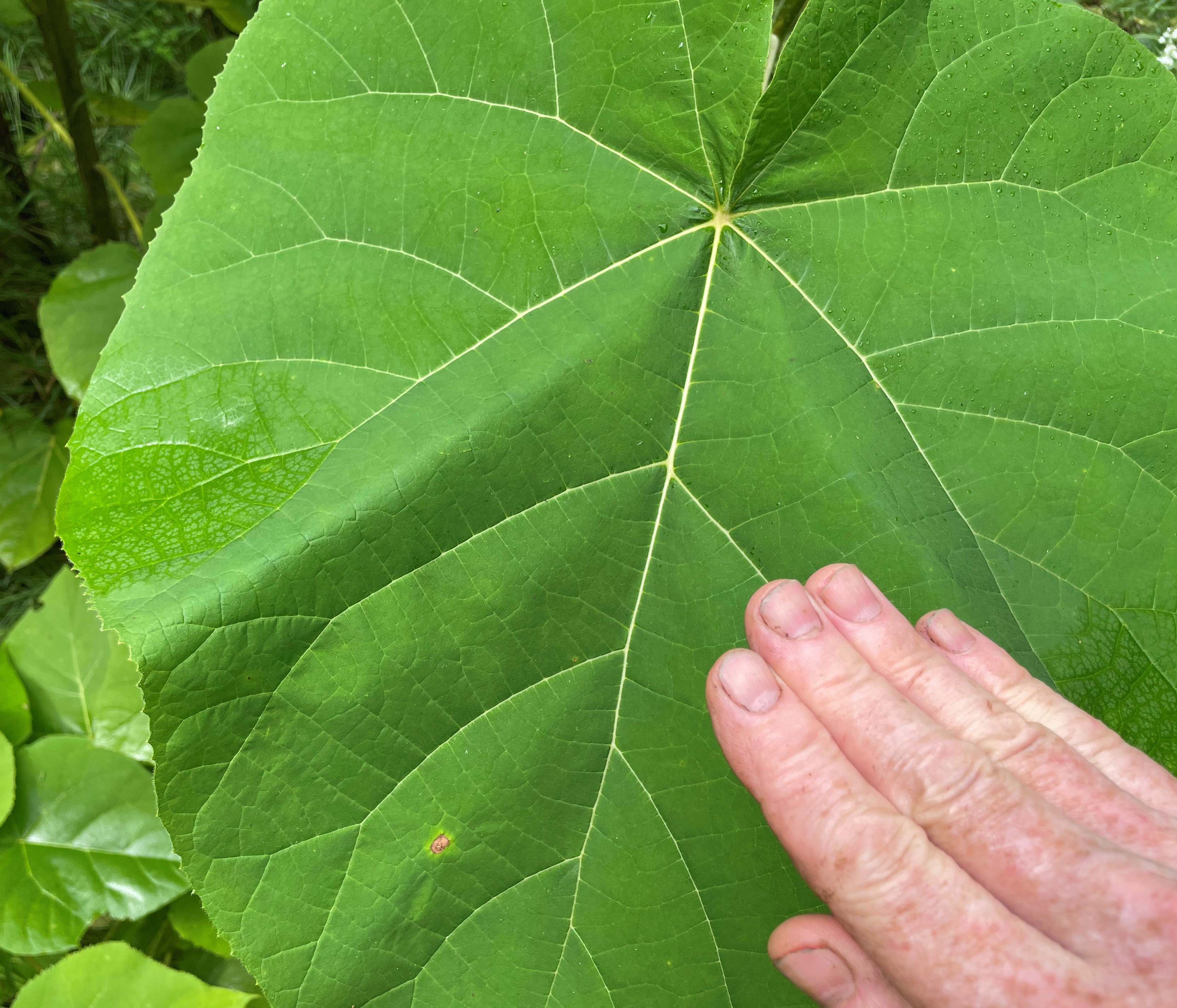

.JPG)
Currently unavailable
Lilacina or Fargesii Empress tree is one the longest running tree projects at my farm. Starting in the early 1980's I experimented with many wild and arboretum collected seed strains of the genus Paulownia. Temperatures below minus 15 F meant the end of most of our progeny except one: Lilacina. A few nights of minus 20 F was not a problem. Since then I kept watch for seeds and finally a small seed crop was produced. It is from these seeds I have now produced a second generation of this wonderful large leafed tree with amazing blue and yellow tubular flowers. Enjoy now as seeds are rarely set with this species. The planting was enlarged since the first years and we have started a second generation of hardy Paulownia all in Michigan. Colder than any other planting in North America.
Lilac Paulownia easily grows 3-6 ft. per year with minimal water. It does die back to the ground sometimes in the first year but quickly resprouts and develops straight growth habit over time and with the right pruning techniques. This is common with this species.
The wood is a light balsam wood type but very strong and durable. The growth is similar to a Catalpa but with a stronger apical dominance so it is easily to prune upright.
This tree has great potential as tree crop for timber. It is estimated this would reduce the time to harvest in half or less of any timber crop. Our experience shows this tree not to be as vigorous as other claims made by nurseries or in the southern part of its range but for sure it is one zone colder than others allowing it to grow in a full zone 5. There are other what would be called energy crops or investment type growers and companies working on getting others to grow it for commercial purposes. Being in the nursery industry, I have seen this type of thing before and in general these ideas fail over time as there are few people that know what Paulownia even is. But is a beautiful wood and has a lot of possibilities. And that is what is being sold. It is still used commercially as a shade tree but that is not much the case anymore as the tree that "zooms up" produces a lot of seeds and the self seeding of it is a not a desirable trait hence it got the word invasive stuck to it. For me Fargesii does not self seed. The seeds need bare soil in order to germinate and has the same tendencies as catalpa self seeding. The large leaves and the dense foliage really is an amazing characteristic needed for this world of changing environments. I guess that is what I am selling!!!
To germinate the seeds: The seeds have no dormancy and can sprout with only light if the seeds are sprinkled on top of a moist substrate or soil and then watered and kept watered for 1-3 weeks. Seedlings are incredibly tiny and should be started early to get them up to size early in the spring as they are sensitive to length of daylight. This prevents them from stunting and not growing much the first year.
I think more could be done to my strain and better selections could be developed very easy. Last year a few plants of the most durable trees were put into my planting to increase the seed set on trees. Like bamboo, this tree has a great role to play in developing woody crops for lumber. The orchard floor could be used too at the same time so it doesn't have to be all one species of plant. Lilac paulownia could be a good choice for areas that are not good in general for establishing trees. Will it be developed further depends on the creativity of tomorrows' new generation of plant growers.
| Plant Specs |
| Genus & Species |
Paulownia fargesii |
| Seed Source |
Michigan Ecos selection Originally as a cultivar discovered in western China in 1908. |
| Hardiness |
Has taken -25 F once. The bark cracked on one side.
-20 F is safe. Zones 5-9 |
| Height (ft) |
40-60 |
| Width (ft) |
20-30 |
| Soil |
Not particular. Appears very drought tolerant. |
| Ease of Cultivation |
Because of its insanely fast growth this tree could be used as a model for a fast growing timber crop. It light weight as well as its color is like you crossed balsam wood with basswood. Its deep green large leaves measuring over a foot across and its abiilty to grow in mariginal conditions make it an ideal shade tree as well. Lilacina rarely sets seed at our farm in southern Michigan so self seeding is minimized as well which makes it a much cleaner tree compared to Catalpa or silver maple. |

